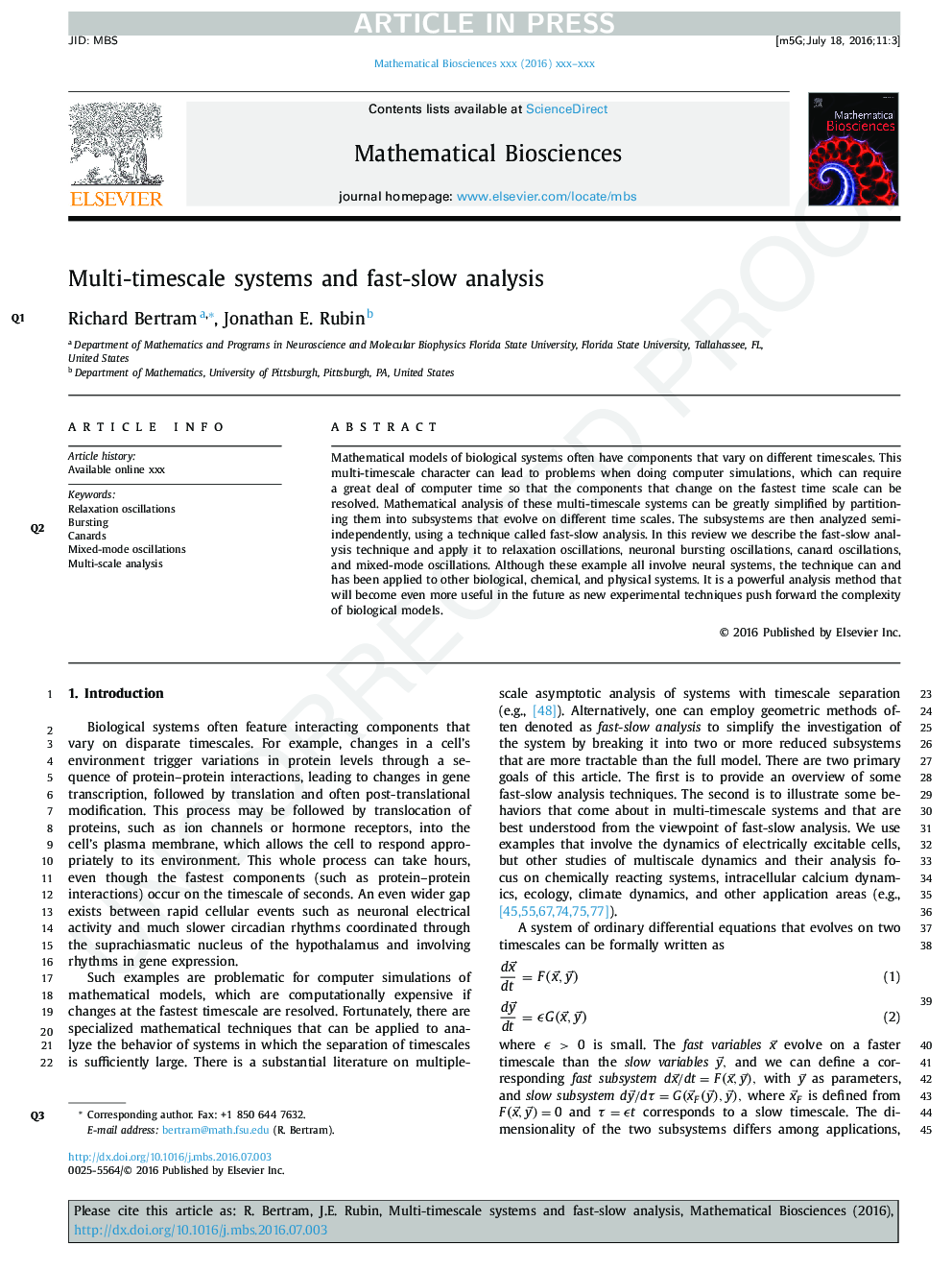| Article ID | Journal | Published Year | Pages | File Type |
|---|---|---|---|---|
| 5760407 | Mathematical Biosciences | 2017 | 17 Pages |
Abstract
Mathematical models of biological systems often have components that vary on different timescales. This multi-timescale character can lead to problems when doing computer simulations, which can require a great deal of computer time so that the components that change on the fastest time scale can be resolved. Mathematical analysis of these multi-timescale systems can be greatly simplified by partitioning them into subsystems that evolve on different time scales. The subsystems are then analyzed semi-independently, using a technique called fast-slow analysis. In this review we describe the fast-slow analysis technique and apply it to relaxation oscillations, neuronal bursting oscillations, canard oscillations, and mixed-mode oscillations. Although these examples all involve neural systems, the technique can and has been applied to other biological, chemical, and physical systems. It is a powerful analysis method that will become even more useful in the future as new experimental techniques push forward the complexity of biological models.
Related Topics
Life Sciences
Agricultural and Biological Sciences
Agricultural and Biological Sciences (General)
Authors
Richard Bertram, Jonathan E. Rubin,
